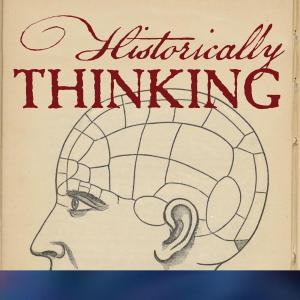Historically Thinking

Episode 332: Rome v. Persia
A Sassanid cataphract in Oxford–fortunately a re-enactor From the Ionian revolt of the 490s, through the battles of Marathon, Thermopylae, Salamis, and Plataea, the vastAchaemenid Persian Empire was pitted against the pitifully small Greek states on its western periphery, until the astonishing successes of Alexander of Macedon decapitated it, placing him and his companions atop that imperial trunk. But Alexander’s death, and the wars of his successors, gave an opportunity for a new power to rise in the far west and march eastward. In time imperial Rome would face new Persian dynasties; and for centuries Rome and Persia warred in the Caucuses and across Mesopotamia, until at the beginning of the seventh century an apocalyptic struggle resulted in the downfall of Persia, and the crippling of Rome, just as a new world-changing force emerged from the Arabian peninsula. That is a pretty good analogue to a Chat GPT description of a millennia’s worth of history, and while some of the facts are correct, nearly all of its interpretations are false. Such is Adrian Goldsworthy’s argument in his new book Rome and Persia: The Seven Hundred Year Rivalry. While there were periods of warfare, they were given the length of the two empires coexistence very sporadic indeed. Moreover, both empires had a respect for each other that they offered no other polity, and the trade and commerce between them–not just in products, but also in cultural mores–was perhaps the most important feature of their relationship. This is Adrian’s fourth appearance on the podcast. He was last on the podcast discussing his book Philip and Alexander: Kings and Conquerors; he has also explained how Hadrian’s Wall worked, and why Julius Caesar needs to be taken seriously as a historian. For Further Investigation The Roman Eastern Frontier and the Persian Wars AD 226-363: A Documentary History, edited by Michael H. Dodgeon and Samuel N. C. Lieu, and The Roman Eastern Frontier and the Persian Wars AD 363-628, edited by Geoffrey Greatrex and Samuel N. C. Lieu–Adrian writes that "both very well done for the later periods with sources and comments" Ammianus Marcellinus, The Late Roman Empire (AD 354-378) Goldsworthy also recommends the Perseus Digital Library for all your classical reading and research needs For why battles aren't as important as you think they are, see my conversation with Cathal Nolan Conversation with Adrian Goldsworthy Al: [00:00:00] Welcome to Historically Thinking, a podcast about history and how to think about history. For more on this episode, go to historically thinking.org, where you can find links and readings related to today's podcast. Comment on the conversation and sign up for our newsletter, and consider becoming a member of the Historically Thinking Common Room, a community of Patreon supporters. Hello, from the Ionian Revolt of the 490s, through the battles of Marathon, Thermopylae, Salamis, and Plataea, the vast Persian Empire of the Achaemenid Dynasty was pitted against the pitifully small Greek states on its western periphery, until the astonishing successes of Alexander of Macedon decapitated it, placing him and his companions atop that imperial trunk. But Alexander's death, and the wars of his successors, gave an opportunity to a new power to rise in the far west. In time Rome, first as republic and then as empire, would face new Persian dynasties. For centuries, Rome and Persia warred in the Caucasus and across [00:01:00] Mesopotamia, until at the beginning of the 7th century, an apocalyptic struggle resulted in the downfall of Persia, the crippling of Rome, just as a new world changing force emerged from out of the Arabian Peninsula. That is a pretty good analogue to a chat GPT description of a millennia's worth of history. And, like lots of chat GPT descriptions, while some of the facts are correct, nearly all of the interpretations are false. Such would be Adrian Goldsworthy's argument in...






 Visit Podcast Website
Visit Podcast Website RSS Podcast Feed
RSS Podcast Feed Subscribe
Subscribe
 Add to MyCast
Add to MyCast